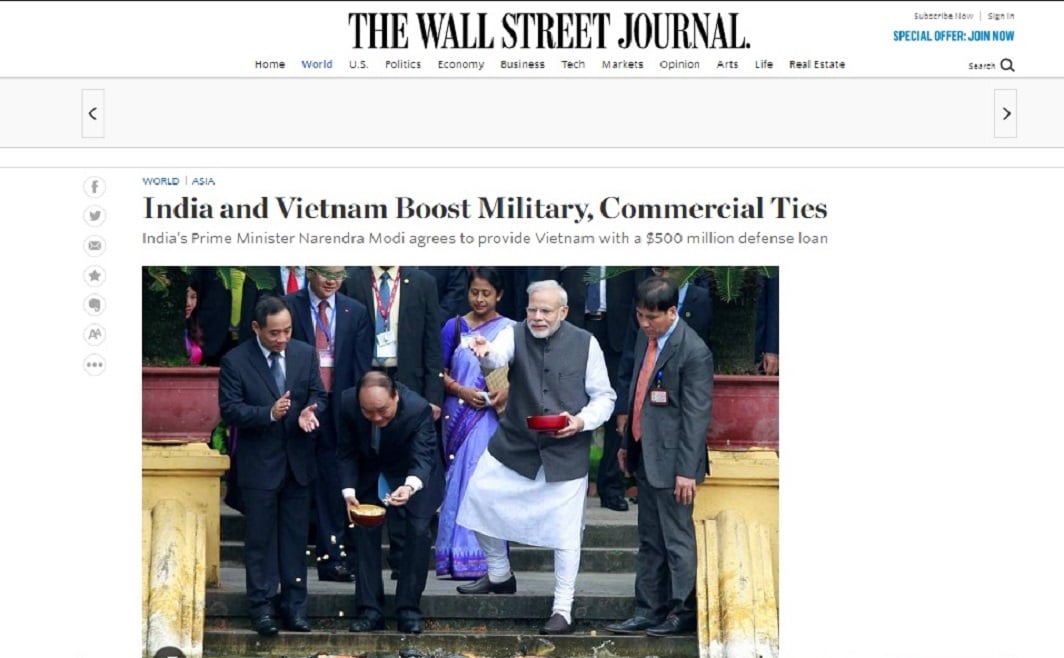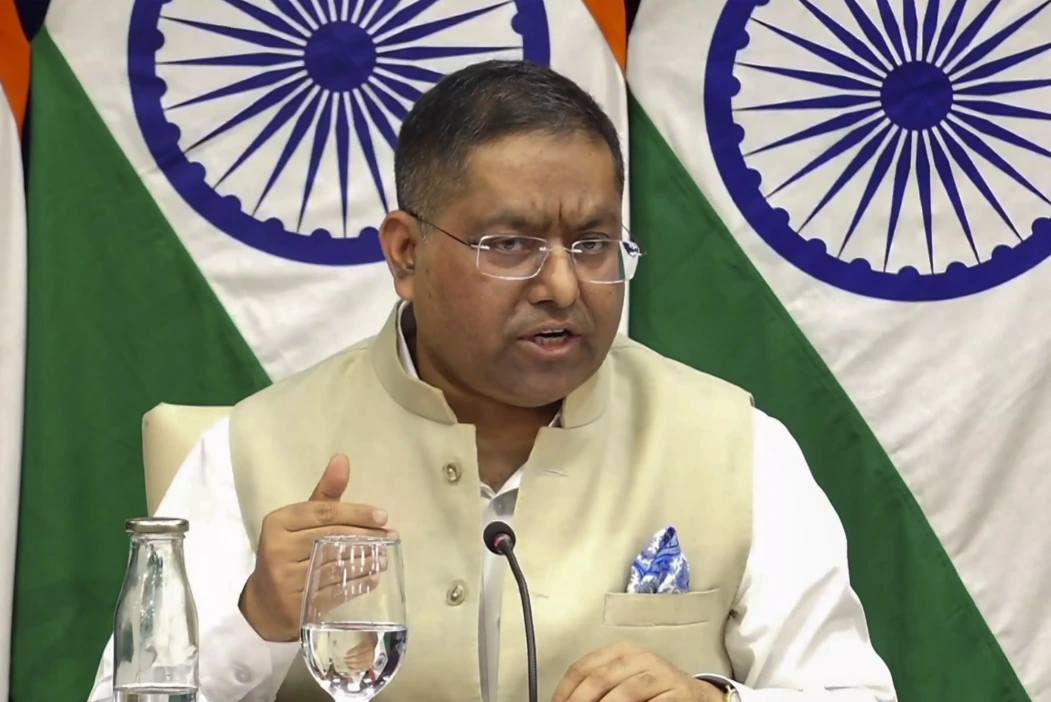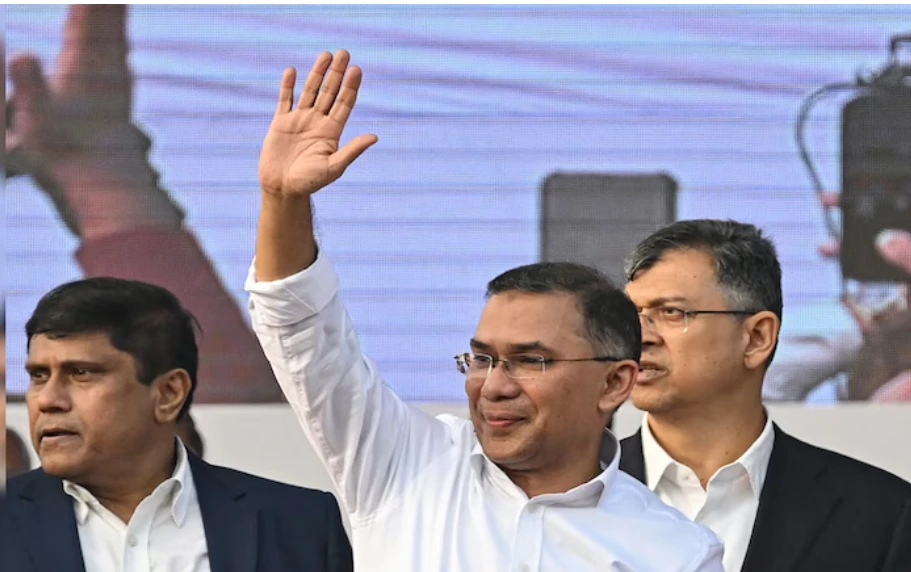[vc_row][vc_column][vc_column_text]By Sujit Bhar
India’s decision to sell the sophisticated Akash missile systems to Vietnam has drawn strong reactions from sections of the Chinese media. They range from a virtual warning from their state-run media to derision from columnists. The international media, on the other hand, has treated this with optimism as has the Indian media.
In the face of it, Prime Minister Narendra Modi’s Look East policy could project Vietnam as a strong hub amid the network that India hopes to build. The UD $ 500 million line of credit, upped from the US $ 100 million October 2014 understanding when the then-Prime Minister Nguyen Tan Dung visited India is a critical pitch that could put an unwanted Indian finger in already convoluted South China Sea pie.
Akash is a medium range surface-to-air missile (SAM) that India’s Defence Research and Development Organisation has manufactured. With a range of 25km, it can easily target aircraft, helicopters and drones. India’s Varunastra anti-submarine torpedoes are also for sale if Vietnam so wishes. Theoretically, these can easily be used by Vietnam on neighbours China during conflict.
The Indian line was clear from Modi’s October statement last year. He had said: “Our defence cooperation with Vietnam is among our most important ones. India remains committed to the modernization of Vietnam’s defence and security forces.”
This “treaty” has three angles. First, this will represent a disruptive Indian presence in an area where China is upping the ante, a tit-for-tat, so to say, for China’s presence in Pakistan. Secondly, it could be an Indian foreign policy success story that can translate to major trade deals in the area. And third, a budding Indian defence industry wants to expand like the Chinese defence industry is. India’s aim in weapons export is US $ 2 billion. China has boosted its weapons export to US $ 6 billion in a short time.
Indian Defence Research Wing (IDRW) in an article says: “Bilateral defence education and training programmes are also growing, as witnessed in rising Indian assistance to the Information Technology and Foreign Languages Training Center at the Signal Officers Training School in Nha Trang… India has agreed to train Vietnamese pilots on Russian-built SU-30s and Sukhoi fighter jets and currently trains Vietnamese submarine operators on Russia-produced Kilo-class submarines.”
This shows that the understanding has now deepened and has seen years of strategic build-up on wither side, a positive step.
The Wall Street Journal has reported: “Defence analysts say the weapons are ideally suited to taking out naval targets. In seeking to upgrade military capabilities as China improves its own capabilities, Vietnam has emerged as the world’s eighth-largest arms importer from 2011 to 2015, according to the Stockholm International Peace Research Institute.
“Indian warships have also made a point of visiting Vietnamese ports, part of Hanoi’s own policy of encouraging more international navies into the contested waters of the South China Sea, where both Vietnam and China have overlapping claims to some of the world’s busiest shipping lanes.”
The Journal also observes: “Carlyle Thayer, emeritus professor and a Vietnam expert at the Australian Defence Force Academy, notes that the Indian leader’s visit to Vietnam follows high-level Chinese visits to Pakistan last year, where China is helping to finance the development and expansion of the deep-water port at Gwadar on the Arabian Sea.”
The Diplomat, a Tokyo-based journal on South Asia has said: “India has also considered offering Vietnam the considerably more advanced BrahMos supersonic cruise missile, pending consent for the sale from Russia, a co-developer of the BrahMos. India and Russia are reported to have resolved intellectual property issues that had held up talks with Vietnam over the BrahMos.” That sale has been scuppered thereafter, as Russia has yet to agree, but the issue remains on the table, as a threat to China.
An op-ed article in China’s Global Times was critical of the deal. In the article, headlined ‘India-Vietnam sea cooperation will be limited’, the author writes: “India and Vietnam seem to share quite a few common interests and similarities in terms of their policies toward Beijing. They both have complicated and unresolved border disputes with China. They both have bitter history of being defeated in border wars with China…”
He goes on to write: “Under (sic) such a backdrop, Modi’s visit to Vietnam has without doubt made Indians associate the tour with many strategic meanings, believing that New Delhi and Hanoi might jointly pile pressure on Beijing.
“As far as I am concerned, such a possibility cannot be totally excluded, but it will not play a vital role either. India has always been cautious when it comes to directly putting the screw on China. In this regard, the US has never stopped drawing New Delhi over to its side for its rebalance to the Asia-Pacific strategy, but India only showed reluctance toward it and has not responded to Washington actively. This has made the White House quite grouchy.”
On the side, China has warned Vietnam on the outcome if it signs this deal with India. One has to remember that China not only contributes heavily to Vietnamese development, Vietnam is a huge tourist destination for the Chinese, bringing in rich foreign currency.
This will be a critical and quizzical issue for Vietnam and India.[/vc_column_text][/vc_column][/vc_row]


 Latest world news23 hours ago
Latest world news23 hours ago
 India News7 hours ago
India News7 hours ago
 India News6 hours ago
India News6 hours ago
 India News6 hours ago
India News6 hours ago
 India News5 hours ago
India News5 hours ago
 India News3 hours ago
India News3 hours ago













